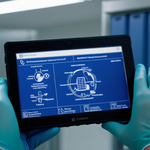
Multi-Factor Authentication (MFA) has become the cornerstone of modern cybersecurity defenses, with research from Microsoft demonstrating that MFA can block more than 99.2% of account compromise attacks. However, as individuals and organizations expand their digital footprints across numerous platforms, applications, and services, the management, organization, and auditing of MFA implementations across multiple accounts has become increasingly complex. This report provides a detailed examination of the strategies, methodologies, and best practices for organizing and auditing MFA across multiple accounts while maintaining vigilant monitoring for breach exposure and identity compromise. The analysis integrates current industry guidance, emerging technologies, and practical implementation frameworks to create a comprehensive roadmap for maintaining robust multi-account MFA security in an evolving threat landscape where identity-based attacks are escalating at unprecedented rates.
Understanding the Complexity of Multi-Account MFA Architecture
The landscape of modern digital engagement requires individuals and organizations to maintain dozens, hundreds, or even thousands of accounts across various platforms and services. Each account represents a potential attack vector, and the proliferation of accounts exponentially increases the surface area for identity-based attacks. Traditional approaches to account security that focused on strong passwords alone have proven inadequate in the face of sophisticated threat actors who employ phishing, credential stuffing, social engineering, and other advanced tactics. Multi-Factor Authentication has emerged as a critical defense mechanism, yet implementing and maintaining MFA across multiple accounts introduces significant operational complexity that demands careful consideration and strategic planning.
The challenge of multi-account MFA extends beyond simple technical implementation. Organizations and individuals must grapple with the reality that different services support different authentication methods, each with varying levels of security, usability, and compatibility with existing infrastructure. Some platforms support industry-standard methods like FIDO2 security keys and passkeys, while others remain limited to SMS-based verification or proprietary authenticator apps. This heterogeneity creates situations where users must maintain multiple authenticator applications, manage various backup code collections, and coordinate across different authentication ecosystems simultaneously.
The human factor compounds these challenges significantly. Users tasked with maintaining MFA across multiple accounts frequently experience what has been termed “MFA fatigue,” where the constant requirement to provide additional authentication factors leads to user resistance, circumvention of security measures, or adoption of dangerous workarounds. Furthermore, the technical complexity of managing MFA credentials, backup codes, seed keys, and recovery procedures creates opportunities for human error that can result in account lockouts, credential loss, or unintended exposure of sensitive authentication information. This tension between security requirements and user experience must be carefully balanced through thoughtful organizational frameworks and clear audit procedures.
Organizations managing multi-account MFA implementations face additional layers of complexity. In enterprise environments, the challenge extends to managing MFA across diverse user populations, including full-time employees, contractors, vendors, and external partners, each with different access requirements and technical proficiencies. Shared administrative accounts present particular difficulties, as traditional MFA architectures were designed for individual users rather than groups of people requiring access to the same account. The solution often requires specialized implementations such as Privileged Access Management (PAM) systems or careful configuration of conditional access policies, adding further complexity to the organizational architecture.
Organizational Frameworks for Managing Multiple MFA Implementations
Effective management of MFA across multiple accounts requires establishing a comprehensive organizational framework that provides structure, clarity, and consistency. This framework must balance security requirements against operational feasibility while remaining adaptable to evolving threat landscapes and changing business needs. The foundation of this framework begins with careful assessment and inventory of all accounts requiring MFA protection, followed by categorization based on risk level, data sensitivity, and business criticality.
Strategic Categorization and Prioritization
Organizations should implement a tiered approach to MFA deployment and management that reflects the risk profile and sensitivity level of each account. Critical accounts requiring the highest level of protection, such as email accounts, administrative access points, financial systems, and identity provider accounts, should receive immediate attention and the most stringent authentication requirements. These accounts often contain sensitive personal information or provide gateway access to other critical systems, making their compromise particularly devastating. For these accounts, organizations should mandate phishing-resistant MFA methods, such as FIDO2 security keys or passkeys, which provide protection against the social engineering and interception attacks that frequently compromise SMS-based or push notification MFA methods.
Secondary-tier accounts encompassing cloud applications, SaaS platforms, and data repositories should receive robust MFA implementation using either hardware tokens, authenticator apps, or other methods that provide good security characteristics while maintaining reasonable user convenience. These accounts typically contain business-sensitive information or provide access to important workflows and should be protected with strong MFA implementations, though slightly less stringent than critical systems. The selection of MFA method for this tier should consider both security and integration characteristics, recognizing that different applications support different authentication methods.
Tertiary accounts representing lower-risk services, personal convenience platforms, and non-critical systems can utilize more user-friendly MFA methods, such as push notifications or SMS-based codes, balancing security requirements with the practical reality that users will not maintain the same vigilance for less critical accounts. However, even these accounts should maintain MFA protection, as breach of personal convenience accounts can lead to identity compromise, credential theft, or lateral movement to more critical systems.
Implementation of Centralized Identity and Access Management
Organizations managing multiple accounts should, where technically feasible, implement centralized identity and access management (IAM) solutions that provide unified MFA policy management across diverse systems and applications. These solutions can manage the entire identity and access lifecycle for an organization’s workforce through centralized orchestration of user and service accounts in accordance with established policies. Rather than forcing administrators to configure MFA independently on each system, centralized IAM platforms allow for policy-based enforcement that applies consistently across all connected applications and systems.
Modern IAM solutions should support multiple authentication methods and provide the flexibility to implement context-aware or adaptive authentication. This approach enables organizations to require stronger authentication methods for high-risk scenarios, such as access from unusual locations or times, login attempts from new devices, or access to sensitive resources, while maintaining reasonable user convenience for routine access patterns. Furthermore, centralized IAM platforms enable better management of privileged accounts, service accounts, and shared credentials, which present particular challenges in multi-account environments.
Single Sign-On and Federation Architecture
For organizations managing extensive account portfolios, implementing Single Sign-On (SSO) and identity federation capabilities can significantly reduce MFA management complexity while improving security outcomes. Rather than requiring users to authenticate individually to each application with separate credentials and MFA factors, SSO enables users to authenticate once to a central identity provider and gain access to multiple applications and systems through trusted federation relationships. This architectural approach reduces the number of distinct MFA implementations that must be maintained, simplifies user authentication workflows, and creates opportunities for centralized monitoring and auditing of authentication activity.
Identity federation also addresses the particular challenge of managing MFA for external users, partners, and contractors who require access to organizational systems without becoming full members of the organization’s identity infrastructure. Through federation relationships, external users can authenticate using their own organization’s identity provider while the resource organization maintains control over access policies, audit trails, and security requirements. This distributed trust model enables secure collaboration while minimizing the administrative burden of managing external identities.
Backup Code and Recovery Strategy
A critical element of multi-account MFA organization is establishing a coherent strategy for backup codes and recovery procedures. Most MFA implementations provide users with a set of single-use backup codes during initial setup, allowing account recovery if primary authentication methods become unavailable. However, users frequently fail to securely store these codes or lose track of multiple backup code collections across their various accounts, creating situations where account recovery becomes difficult or impossible.
Organizations and individuals should implement a systematic approach to backup code storage that balances security against accessibility. Backup codes should never be stored in unencrypted digital files or cloud storage services accessible without authentication, as compromise of such storage would provide attackers with bypass mechanisms for MFA protection. Instead, backup codes for critical accounts should be printed and stored in secure physical locations, such as safes or safety deposit boxes, with clear labeling indicating which account each set of codes protects and when the codes were generated. For organizations, centralized management of backup codes through secure credential storage solutions or password managers can provide better visibility and control.
An alternative or complementary approach involves utilizing password managers that support secure storage of authentication tokens and backup codes. Premium password managers like Keeper, 1Password, and Bitwarden allow users to store their MFA seeds, secret keys, and backup codes alongside password information, protected by the master password and encrypted end-to-end. This approach provides convenient access to backup codes when needed while maintaining strong encryption protection against unauthorized disclosure.
Audit Methodologies for Multi-Account MFA Systems
Effective management of multi-account MFA implementations requires establishing comprehensive audit procedures that verify MFA enablement, assess implementation quality, identify gaps and inconsistencies, and detect potential vulnerabilities. These audit methodologies must be systematic, repeatable, and capable of scaling across large numbers of accounts and diverse platforms.
Inventory and Assessment Procedures
The foundation of MFA auditing begins with comprehensive inventory and assessment of all accounts subject to MFA requirements. This inventory should systematically document each account, the platform or service it provides access to, the sensitivity and criticality classification of the account, the MFA methods currently enabled, the backup code status, and the date of last MFA verification. For organizations with extensive account portfolios, this inventory should be stored in a centralized database or spreadsheet enabling filtering, searching, and reporting functions.
The assessment procedure should verify that each account’s MFA implementation aligns with established organizational policies and risk-based requirements. For accounts classified as critical, auditors should verify that phishing-resistant MFA methods like FIDO2 keys or passkeys have been enabled and that weaker SMS-based or push notification methods have not been allowed as primary authentication factors. For secondary-tier accounts, auditors should confirm that at least one robust MFA method has been enabled, preferably using authenticator apps or hardware tokens rather than SMS. The assessment should also document whether backup codes have been generated and securely stored according to organizational procedures.
Methodologies for Azure and Microsoft Enterprise Environments
For organizations utilizing Microsoft Azure and Microsoft Entra ID platforms, Microsoft has established specific procedures for verifying MFA enablement that acknowledge the distinction between per-user MFA status and Conditional Access policy-based enforcement. The distinction is important because users managed through Conditional Access policies may not display MFA as “enabled” in per-user settings, yet they are effectively required to authenticate using MFA when accessing protected resources.
Organizations can verify Azure MFA status through multiple methods, each providing different levels of detail and insight. The Microsoft Entra admin center provides a user registration details report showing which authentication methods each user has registered, enabling verification that users have configured appropriate MFA factors. For more comprehensive auditing, PowerShell scripts can query Microsoft Graph API endpoints to generate detailed reports on MFA registration status across entire tenant populations. The query endpoint `https://graph.microsoft.com/beta/reports/authenticationMethods/userRegistrationDetails` provides programmatic access to MFA registration data enabling bulk reporting and analysis.
Starting in October 2024, Microsoft began enforcing mandatory MFA for all Azure administrative operations, with enforcement gradually rolling out to all tenants. This enforcement applies to the Azure portal, Microsoft Entra admin center, and Microsoft Intune admin center for Create, Read, Update, or Delete (CRUD) operations. Beginning in October 2025, Phase 2 enforcement will extend to Azure CLI, Azure PowerShell, Azure mobile apps, Infrastructure-as-Code tools, and REST API endpoints for Create, Update, and Delete operations. Organizations operating in Azure environments must verify compliance with these evolving requirements and adjust their audit procedures accordingly.
Conditional Access Policy Auditing
Organizations implementing Conditional Access policies to enforce MFA should audit the effectiveness and scope of these policies to ensure comprehensive coverage of accounts requiring MFA protection. The audit should verify that Conditional Access policies target all appropriate user populations, including administrators, employees with access to sensitive data, and external partners requiring access to critical systems. Auditors should also ensure that exclusions from MFA policies are minimal and deliberate, reserved only for emergency access accounts or service principals where MFA creates operational impossibility.
The audit should assess whether Conditional Access policies incorporate appropriate risk-based or context-aware authentication triggers. Policies should require stronger authentication methods, such as phishing-resistant MFA, for high-risk scenarios including login attempts from unusual locations, impossible travel patterns, new devices, or specific high-risk user groups. This graduated approach to authentication requirements optimizes both security and user convenience by reserving the strongest authentication requirements for highest-risk scenarios while maintaining reasonable user experience for routine access patterns.
Verification of Backup Code and Recovery Procedures
A critical audit component involves verifying that users have properly stored backup codes and understand recovery procedures should their primary MFA methods become unavailable. Auditors should sample a subset of accounts to verify that backup codes exist and are stored in secure locations. For critical accounts, auditors should attempt to verify that backup codes could be recovered if needed, without actually using codes during the verification process. This testing should confirm that documented recovery procedures would actually enable account access restoration in emergency scenarios.
Organizations should also audit the currency and rotation of backup codes, recognizing that codes have limited lifespans and require periodic regeneration. Best practices suggest that organizations establish a schedule for backup code rotation, potentially requiring users to regenerate backup codes annually or at other intervals appropriate to organizational risk tolerance. The audit should verify that this rotation schedule is being followed and that backup code storage reflects the most recent code generation.

Breach Monitoring and Identity Exposure Detection
Effective multi-account MFA management extends beyond implementation and configuration to encompass continuous monitoring for evidence of account compromise, credential theft, and identity exposure. Modern threat landscapes involve sophisticated attack techniques that can defeat or bypass even well-configured MFA systems, necessitating continuous monitoring for signs of compromise. This monitoring function addresses the reality that MFA, while highly effective in blocking unauthorized access attempts, does not necessarily prevent attackers from obtaining credentials through phishing, malware, or other means outside the authentication process.
Dark Web Monitoring and Breach Intelligence
A fundamental component of multi-account identity monitoring involves continuous scanning of dark web marketplaces, data dumps, and other sources where cybercriminals traffic stolen credentials and personal information. Professional dark web monitoring services maintain extensive relationships with underground sources and employ automated systems to detect when personally identifiable information or user credentials appear in breach databases or are offered for sale.
Services like Experian’s dark web scan, Google’s dark web report, and specialized services like Enzoic provide continuous or periodic monitoring of identity information across hundreds of thousands of data sources. These services can alert users when their email addresses, phone numbers, Social Security numbers, credit card numbers, usernames, or passwords appear in breach databases or are discovered on the dark web. The monitoring depth varies across services, with comprehensive solutions checking for over 600,000 dark web pages and data sources. Organizations and individuals should evaluate which identity elements require monitoring based on their risk profile and sensitivity of information they maintain.
The critical value of dark web monitoring lies in its ability to detect breaches and credential theft before compromised credentials are actively exploited against account systems. When dark web monitoring alerts users that their credentials have been discovered in a breach database, users can take immediate remedial action including password changes, MFA re-registration, and heightened monitoring of account activity. This rapid response capability significantly reduces the window of opportunity for attackers to exploit compromised credentials.
Credit Monitoring and Financial Fraud Detection
For individuals and organizations managing sensitive accounts containing financial information, credit monitoring represents an essential component of identity compromise detection. Credit monitoring services track all inquiries, applications, and modifications to credit reports at major credit bureaus, immediately alerting subscribers to unauthorized activity. When attackers successfully compromise accounts or steal personally identifiable information, they frequently attempt to open fraudulent credit accounts or credit lines, which would appear as suspicious inquiries or applications on credit monitoring systems.
Comprehensive credit monitoring from all three major credit bureaus—Equifax, Experian, and TransUnion—provides broader visibility than monitoring from individual bureaus. Services like Aura, LifeLock, and IdentityIQ provide real-time monitoring of credit reports from all three bureaus, enabling detection of unauthorized credit activities within hours or minutes rather than the days or weeks that might elapse before a compromise becomes apparent through other means. Some services provide quarterly credit report reviews enabling analysis of trends and identification of suspicious patterns.
Account Monitoring and Unusual Activity Detection
In addition to credit monitoring and dark web scanning, organizations and individuals should implement direct monitoring of accounts themselves to detect signs of unauthorized access or suspicious activity. This account-level monitoring can incorporate several complementary approaches designed to detect compromise through behavioral analysis and anomaly detection.
Real-time monitoring of account activity should flag access from unusual locations, impossible travel patterns (such as access from geographically distant locations within impossibly short time periods), access at unusual times of day, or access from new devices. Modern identity monitoring solutions employ behavioral analytics to establish baseline patterns for each user’s normal authentication behavior, then alert security teams or users when activity deviates from established patterns. These deviations may indicate account compromise through credential theft or credential stuffing attacks.
Account monitoring should also track modifications to sensitive account settings such as recovery email addresses, phone numbers, two-factor authentication methods, and security questions. When attackers compromise accounts, they frequently modify these settings to lock out legitimate users and maintain persistent access, making changes to account recovery methods a key indicator of compromise. Organizations should implement alerting systems that immediately notify account owners when these sensitive settings are modified.
Continuous Vulnerability Assessment
Organizations managing multi-account MFA implementations should conduct periodic vulnerability assessments and penetration testing to identify weaknesses in MFA configurations, backup procedures, or supporting infrastructure. These assessments should evaluate whether MFA implementations are deployed consistently across all systems requiring protection, whether weaker authentication methods have been inadvertently allowed as primary factors, whether backup codes are properly protected, and whether audit procedures would detect common MFA bypass techniques.
Vulnerability assessments should specifically examine whether MFA implementations provide adequate protection against credential stuffing attacks. While MFA provides strong protection against direct credential stuffing attacks, organizations should verify that rate limiting and bot detection mechanisms are in place to prevent attackers from conducting large-volume login attempts. Similarly, assessments should evaluate whether organization has implemented mechanisms to check compromised credential databases and alert users when their credentials have been exposed in breaches.
Recovery, Backup, and Business Continuity Planning for MFA Systems
Despite best efforts to maintain MFA configurations and prevent compromise, situations inevitably arise where users cannot access their primary MFA methods due to device loss, damage, software failures, or other contingencies. Organizations managing multi-account MFA implementations must establish robust recovery and business continuity procedures ensuring that account access can be restored when MFA systems fail or become unavailable.
Backup Authentication Methods and Redundancy
A fundamental principle of resilient MFA architecture involves providing multiple independent authentication methods for each critical account, enabling access restoration if the primary method becomes unavailable. Organizations should require users to register at least two distinct MFA methods for critical accounts, with methods selected from different categories to ensure true independence. For example, a critical account might have both a FIDO2 hardware security key and an authenticator app registered as MFA methods; even if the physical key is lost, the authenticator app remains available for authentication.
This redundancy strategy extends to the devices themselves; users should store physical authentication keys in multiple locations or register MFA methods on multiple devices, ensuring that loss or compromise of a single device does not result in complete loss of access. Users might scan the same QR code for an authenticator app onto multiple phones, or maintain multiple hardware security keys with one serving as a backup stored in a secure location. This approach balances security against the operational reality that users require reasonable assurance they will not be locked out of critical accounts.
Temporary Access Pass and Just-In-Time Recovery
Organizations utilizing Microsoft Entra ID and other modern identity platforms should implement Temporary Access Pass (TAP) functionality, which provides time-limited passwords enabling account access when users have lost access to MFA methods. TAP enables administrators to issue a temporary single-use password valid for a limited time period, allowing users to regain access to their accounts and reconfigure MFA methods. This functionality proves invaluable for recovery scenarios where users have lost devices or cannot access registered MFA methods.
However, TAP functionality must be carefully controlled to maintain security; the temporary passwords should be generated by administrators only through secure administrative processes, never communicated through insecure channels, and subject to strong audit logging showing who issued temporary access and for which accounts. Organizations should establish policies defining authorized reasons for TAP issuance and require managers or security teams to approve TAP requests before issuance.
Account Recovery and Re-registration Procedures
Organizations should establish clear, documented procedures for account recovery and MFA re-registration following device loss, compromise, or other events requiring authentication method changes. These procedures should include identity verification steps confirming that individuals requesting account recovery are actually authorized account owners, preventing attackers from using recovery procedures to gain account access. Recovery procedures might involve answering security questions, providing identification documents, or other identity verification techniques appropriate to the account sensitivity level.
The re-registration procedure should require users to establish new MFA methods following account recovery, ensuring that compromised or lost devices are removed from the account’s authorized factors. Organizations should retain backup codes generated during initial MFA setup as a mechanism for regaining access when new MFA methods need to be established. Users accessing their accounts using backup codes should then immediately register new MFA methods and generate new backup codes for future use.
Service Account and Shared Account Recovery
Organizations managing shared administrative accounts or service accounts present particular challenges for MFA recovery procedures. Shared accounts used by multiple people cannot rely on individual device-based MFA, as no single device will always be available to the authorized users. Organizations should implement alternatives such as centralized Privileged Access Management (PAM) systems that store authentication credentials in a secured vault and distribute credentials to authorized users only when they need account access. PAM systems can provide MFA for privileged accounts through several mechanisms including hardware tokens, virtual tokens stored in the PAM system, or location and time-based restrictions.
For temporary emergency situations requiring immediate access to shared accounts when normal recovery procedures cannot be followed, organizations should establish break-glass or emergency access procedures. These procedures should require multiple levels of approval, generate comprehensive audit trails, and automatically alert security teams to the emergency access. Emergency access accounts themselves should be subject to MFA requirements and should not serve as backdoors that bypass normal authentication requirements.
Regulatory Compliance and Audit Requirements
Multi-account MFA implementations must align with regulatory and compliance requirements applicable to the organization, which vary significantly depending on the industry, geographic location, and type of data handled.

GDPR and Data Protection Requirements
Organizations processing personal data of European Union residents must comply with the General Data Protection Regulation (GDPR), which requires implementing appropriate technical and organizational measures to protect personal data security. GDPR does not explicitly mandate MFA but requires security measures appropriate to the risk level and sensitivity of data processed. Most regulatory bodies and compliance frameworks interpret this requirement as necessitating MFA for accounts with access to sensitive personal data. Organizations demonstrating MFA implementation in their security controls are generally considered to be implementing appropriate security measures for GDPR compliance.
HIPAA Healthcare Requirements
Organizations in the healthcare sector must comply with the Health Insurance Portability and Accountability Act (HIPAA), which requires safeguarding protected health information (PHI) through appropriate administrative, physical, and technical controls. HIPAA specifically requires user authentication controls and is generally interpreted by compliance specialists as requiring MFA for administrative access to systems containing PHI and for remote access to healthcare systems. Healthcare organizations subject to HIPAA should implement MFA on administrative accounts, remote access systems, and any application providing access to PHI.
PCI DSS Payment Card Industry Requirements
Organizations processing credit card payments must comply with the Payment Card Industry Data Security Standard (PCI DSS), which requires implementation of strong access control measures including MFA for administrative access to cardholder data and systems. PCI DSS specifically requires MFA for any access to the cardholder data environment from outside the network, and for administrative access to the cardholder data environment from remote locations. Organizations processing payments should implement MFA on all administrative accounts and remote access points for systems handling payment card information.
Cyber Insurance and Contractual Requirements
In addition to regulatory requirements, many cyber insurance policies now require MFA implementation as a condition of coverage. Insurance policies increasingly mandate MFA for critical systems and administrative accounts, and may require specific MFA methods such as hardware tokens or phishing-resistant factors. Organizations maintaining cyber insurance should review policy requirements and ensure MFA implementations meet insurance mandate specifications. Failure to implement required MFA could result in claim denial if a covered incident occurs.
Best Practices and Implementation Recommendations
Drawing from current industry guidance and research findings, several overarching best practices emerge for effective multi-account MFA organization and auditing.
Establish Clear Governance and Policy Framework
Organizations should establish a comprehensive written policy defining MFA requirements across all account categories, identifying which accounts require which MFA methods, specifying backup and recovery procedures, and establishing audit and compliance verification mechanisms. The policy should clearly designate responsibility for MFA management, backup code storage, and recovery procedures, ensuring accountability for security outcomes. The policy should distinguish between requirements for different account categories and provide clear guidance enabling users and administrators to implement appropriate security measures for accounts within their responsibility.
Implement Phishing-Resistant MFA for Critical Accounts
For accounts representing highest security and business criticality, organizations should prioritize implementation of phishing-resistant MFA methods, particularly FIDO2 security keys and passkeys, which provide protection against the phishing, social engineering, and man-in-the-middle attacks that frequently compromise SMS-based or push notification MFA methods. Organizations should roll out FIDO2 keys or passkeys to administrators and users with access to critical systems as a matter of priority, recognizing that administrative account compromise carries particularly severe security consequences.
Establish Systematic Backup Code Management
Organizations should implement centralized secure storage for backup codes, either through physical secure storage combined with clearly labeled documentation, or through password managers and credential management systems providing encrypted storage with access audit trails. Users should be required to securely store backup codes during MFA setup and should understand that backup codes provide access to their accounts and must be protected accordingly. Organizations should implement policies requiring periodic backup code rotation and should audit compliance with backup code storage requirements.
Conduct Regular Audit and Assessment Activities
Organizations should establish a schedule for regular MFA audits verifying that implementations meet organizational policies, that phishing-resistant methods are deployed for critical accounts, that backup codes have been stored appropriately, and that recovery procedures would function correctly in emergency situations. Audits should be conducted at least annually, with more frequent assessments for accounts classified as high-criticality. Organizations should maintain audit documentation demonstrating verification activities and remediation of identified deficiencies.
Implement Comprehensive Identity Monitoring
Organizations and individuals should implement dark web monitoring, credit monitoring, and account-level activity monitoring to detect signs of credential compromise, account takeover attempts, or identity theft. These monitoring functions provide early detection of attacks enabling rapid response before attackers can exploit compromised credentials or access to accounts. Monitoring alerting should be configured to notify account owners or security teams immediately upon detection of suspicious activity.
Provide User Training and Support
Organizations should invest in comprehensive user training and support enabling users to successfully implement and maintain MFA across their account portfolios. Training should cover MFA benefits and rationale, step-by-step guidance for enabling MFA on commonly used accounts, proper storage and protection of backup codes and recovery information, and recognition of phishing attempts targeting MFA credentials. Organizations should provide readily accessible support enabling users to recover from MFA-related issues without requiring extensive troubleshooting or documentation search.
Multi-Account MFA: From Organization to Ongoing Assurance
Multi-account MFA organization and auditing represents a complex but essential security practice in contemporary digital environments where individuals and organizations manage expanding portfolios of accounts across diverse platforms and services. The analysis presented in this report demonstrates that effective multi-account MFA management requires systematic organizational frameworks, comprehensive audit procedures, continuous breach monitoring and identity exposure detection, and robust recovery planning to address inevitable contingencies. Organizations implementing the governance structures, policy frameworks, and audit methodologies described in this report will significantly enhance their security posture while maintaining reasonable operational efficiency and user experience.
The evolving threat landscape characterized by increasingly sophisticated identity-based attacks, availability of stolen credentials on dark web marketplaces, and advanced phishing and social engineering techniques necessitates moving beyond viewing MFA as a one-time implementation to recognizing it as an ongoing security practice requiring continuous monitoring, periodic assessment, and proactive management. Organizations that embrace this perspective and implement the comprehensive organizational and audit approaches described here will be better positioned to detect and respond to identity-based attacks before they result in account compromise or data exposure.
Looking forward, organizations should remain vigilant regarding emerging standards and technologies likely to influence MFA practice. The continued evolution toward phishing-resistant authentication methods like FIDO2 and passkeys represents a positive trend offering stronger security posture. Advances in behavioral analytics and artificial intelligence will enable increasingly sophisticated identity monitoring and anomaly detection capabilities. Regulatory requirements for MFA implementation are likely to continue expanding, particularly in sectors handling sensitive personal or financial information. Organizations that proactively implement comprehensive multi-account MFA organization and auditing frameworks today will be well-positioned to adapt to these evolving requirements while maintaining strong security outcomes.
Protect Your Digital Life with Activate Security
Get 14 powerful security tools in one comprehensive suite. VPN, antivirus, password manager, dark web monitoring, and more.
Get Protected Now





